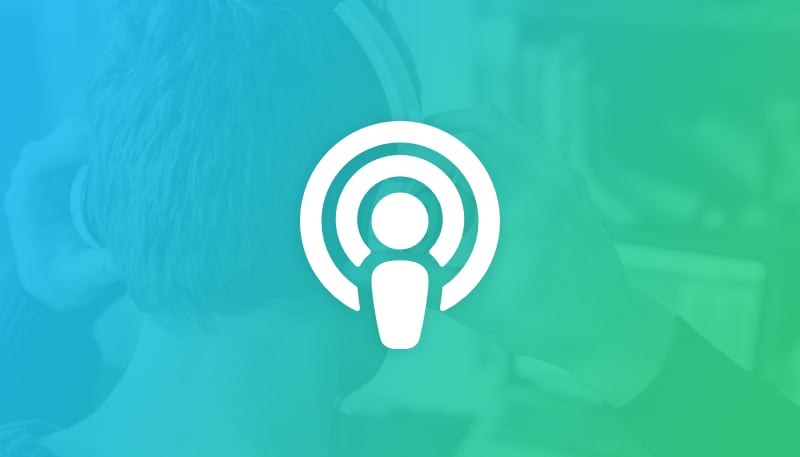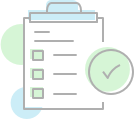
Many of us have been using Twitter for years now, but how many of us have sat down and actually worked on developing a Twitter marketing strategy? It may come easy to simply use Twitter as a place to vent your opinions about the world, or keep in touch with friends and colleagues, but Twitter can be used for much more than that if you come at it with a planned-out strategy.
Tweeting as Yourself vs. Your Company Name
If you’ve already built up a following on Twitter of folks that are your colleagues, you may want to consider creating a separate Twitter account as your company name. If you are a freelancer and do business as yourself, you may still want to come up with an alternative Twitter handle. For example, if your name is “Matt Miller”, you may want to create a handle like “@mattmillerdesign”. This will help you to use one handle to keep things casual with your friends and followers with similar interests, while utilizing another handle to build up a following with your target market.
Who are You Trying to Connect With?
Speaking of target market, it is important to know exactly who you are aiming to reach with your Twitter strategy. It is a helpful exercise to build one or two target personas (marketing speak for “made-up people”), to help you think about what types of content to tweet. Ask youself these questions when building a persona:
- What age are they?
- What are their interests?
- Where do they live?
- How often do they use Twitter?
- When do they use Twitter? (you can use tools like Tweriod to verify this once you get a significant number of followers)
- What do they do for a living?
The list can go on. You don’t have to be super-detailed with this description, but a little bit of persona generation goes a long way when building out your marketing plans.
What is the Purpose of Your Account?
This is the million-dollar question. What exactly are you trying to accomplish here with Twitter. If your goal is to promote your business, then that’s great. However, if your tweets are always promoting your business, that’s bad. It’s a paradox.
Instead of thinking about how you can promote your business, think about how you can benefit your followers (a.k.a, your target audience). Your tweets should be interesting, helpful or conversations with your target audience. As a general rule, about 90% of your tweets should be helpful or engaging to your audience and 10% self-promotional. It is of course understood that you will use Twitter some to promote yourself, but make sure it is only around 1/10th of what you put out there.
Types of Tweets
Now that you’ve developed a persona and a purpose for your tweets, what exactly should you be putting out there? The following are a few of the types of tweets that are often leveraged to drive engagement. The more varied the types of tweets that come from your account, the more interested your audience will be in following you:
- Questions - Ask your followers for their opinions on things. Because you can view Twitter conversation threads, folks love chiming in on a mini-chat around something that interests them.
- Answers - When you see a question asked on Twitter, jump in! Others who are interested in giving or reading the responses for the question will see your profile and response in the conversation thread, and this is a great way to add new followers who are interested in what you are saying.
- Tips - If you can fit a nugget of wisdom into 140 characters, then go for it. These tips have a high rate of retweeting because people either agree with them or find them useful. Some of my best-performing tweets over the years have been quick tips that other has found useful.
- Quotes - Quotes are like tips from somebody else’s lips. They also have a high rate of retweets. As a bonus, I have found that adding a photograph of the person being quoted adds even more engagement, as it simply enhances the message and may trigger nostalgia. For example, if I tweet a Henry Ford quote, I post a black and white, grainy picture of him next to a Model-T.
- Links - These types of tweets are the easiest to come by if you are an avid blog reader. Remember, the point here is to post interesting topics for your target audience, so this may involve monitoring blogs of topics that are of less interest to you, but definitely matter to your audience. If people see you as a curator of relevant news, they will follow you as not to miss out on good articles.
- Comments - Twitter is a social platform, so jump in with comments on what other people are talking about. If someone posts a photo of something interesting, or talks about what they are doing this weekend, leave a comment! This is a great way to get to know your followers, and build up social engagement with your brand. Now, there is a word of warning here, don’t be overly self-promotional, as people will see right through your “friendliness” and may even unfollow you.
- Photos & Videos - Because photos and videos often show up within Twitter feeds, they tend to garnish high engagement from your followers. Also, photos and videos show up in their own special places within Twitter, such as your profile’s sidebar, so using them is a great way to add rich content for others to browse when they are checking you out. Tools like Instagram make it easy to take a photo, add interesting filters, and share socially all from within one app.
- Presentations - If you’ve uploaded a slide deck to SlideShare, any tweet with a link to that slideshow will show up as a scrollable set of slides in a Twitter timeline. Not a public speaker? That’s okay, just put together a mini-presentation on any topic that might be interesting to your audience and share that. Who knows, they may even retweet it if is useful and expand your network.
Optimize your Profile
Every Twitter user has a profile page, but not everybody leverages the capabilities of that profile page to enhance their marketing strategy.
First of all, make sure that your profile picture and background photo are attractive, professional and promote your brand. When building your description, use one or more of the following:
- Another account’s @name - @name’s are clickable within Twitter profiles, so make sure your personal account @mentions your business’s Twitter handle, and vice versa. It is a great way to cross-promote your accounts.
- Use Relevant Hashes - Hash tags are a quick way to squeeze into your profile what types of things you are likely to be tweeting about. If you target audience is small business owners, then putting #smallbusinesstips in your profile lets them know what sorts of content to expect when they follow you.
- Use links - Twitter provides a dedicated place to link to your product or service’s homepage, but there are some views within Twitter where that information does not display, but your profile description does.
Size matters
The first time you use Twitter you realize that the 140 character limit is unforgiving. If you attempt to paste a link that takes you over that limit, it will get cut-off. That is why link shortening services such as Bit.ly are so popular when posting links.
Many people try to get as close to that 140 character limit as they can when they tweet, because bigger is better, right? Well, not so fast. There is a little wiggle room that might be beneficial if you want your content to get quoted by other users. When users quote your tweet, your @username is appended to the tweet, giving credit where credit is due. If there is even more room, they may even add a little commentary to your quote, which will appeal to their followers, and make for a more engaging tweet.
Use Hashtags & @mentions
When tweeting, it helps your discoverability more if you put a hashtag in front of something that might be searched for on Twitter. For example, if you have a great tweet about a conference that you are attending, there may be a dedicated hashtag for that conference that many people are using, and consequently, following along with.
Also, @mentioning a specific user’s name will notify them of your tweet. There is, however, a setting that users can toggle that will not alert them of an @mention unless they are already following that user, a setting I’m sure many popular users enable.
Promoted Tweets, Accounts and Hashtags
After you’ve defined your audience, your strategy, have come up with great content to share, branded your profile, and have started growing your audience, you may want to consider using Twitter’s business services. By setting both a bid and a budget (similar to how Google Adwords works), Twitter will promote a specific tweet into others' profiles, an account as a suggestion of someone they should follow, or a hashtag as a recommended search. Prices will vary depending on how competitive your target is, but you can maximize this investment by being specific with exactly who you are targeting with these paid services, and Twitter does give you a good deal of flexibility in this when purchasing your ad. If you are wondering if it is even worth it, consider that promoted tweets yield engagement levels between 3% and 10% on average.
Adding Automation
There simply is no shortcut when it comes to developing a Twitter marketing strategy and building a following. It does take time, research, effort and reflection on what works for your particular audience. While I would be leary of any service that offers automation of Twitter, there are services that delay your tweet to another time, which can be useful when you are reading through a bunch of articles that you’d like to share, and don’t want to bombaard your timeline with a bunch of posts at once. Two of the most popular services that offer timeline automation are Buffer and HootSuite.
Conclusion
As with most social media tools, you simply have to practice, measure, and adjust your marketing strategy to maximize your reach. With Twitter you may want to measure the number of followers that you have, the number of times people click your shared links, the traffic that comes to your site from Twitter, and the number of retweets of what you are posting. As long as these statistics are improving over time, you know you have developed a successful marketing strategy.







